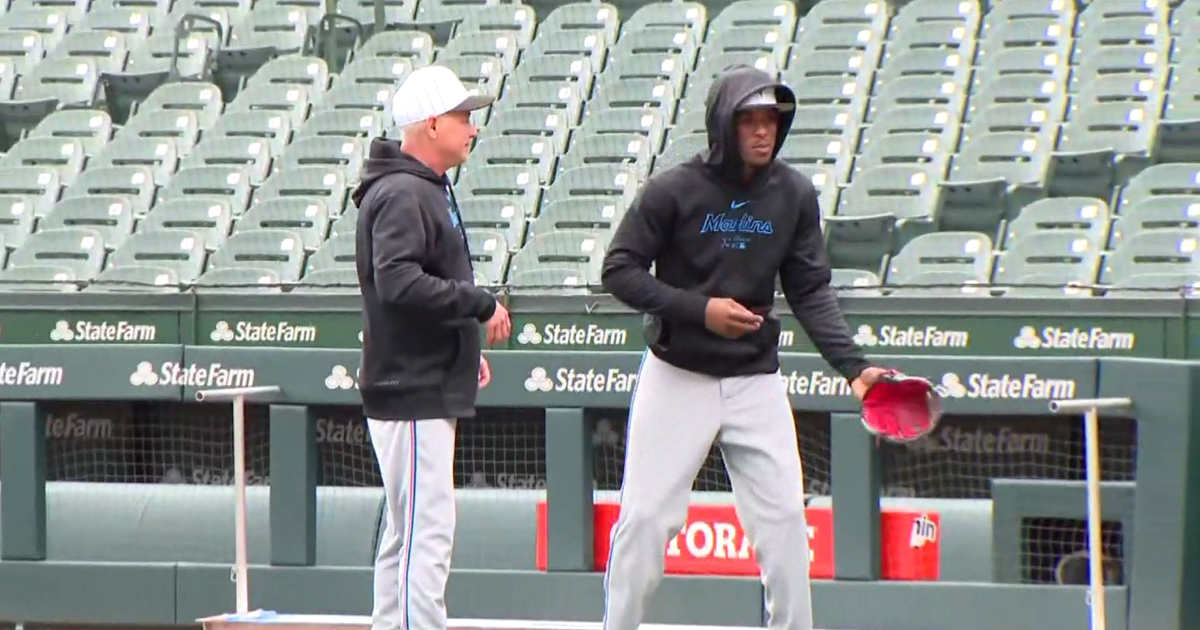Durkin: Evaluating NFC North Draft Classes
By Dan Durkin-
(CBS) After spending countless hours over analyzing the Bears 2013 draft class, it's time to shift the focus and evaluate what their foes did with their selections.
The objective of every franchise is to select difference-making, long-term starters, thus, the ultimate success or failure of a draft class cannot be determined for a few seasons. However, as recent history shows, teams are seeing greater and more immediate impacts from rookies, so expectations are changing.
This analysis will consist of looking at the potential short-term impacts of each draft class, and to discern whether teams were drafting for need, or taking the best football players available to them.
Detroit Lions
The only perk of being a 4-12 team is selecting near the top of every round. However, having an early selection and making the most of it are two different things. The Lions had two top-5 needs: offensive tackle and defensive end. With the top three offensive tackles off the board, the Lions selected defensive end Ezekiel "Ziggy" Ansah of BYU.
Ansah is raw and inexperienced, but at the Senior Bowl - where he was coached by Jim Schwartz and the Lions staff - he flashed at the 9-technique (outside shoulder of the tight end), which is the Lions preferred alignment for their ends. Lining Ansah up next to Nick Fairley and Ndamukong Suh will provide him a lot of single block opportunities ("singles"), but will he make the most of them? Ansah will be a day-one starter, but seems to be a boom-or-bust prospect.
In the second-round, the Lions selected cornerback Darius Slay of Mississippi State, the 2012 Jim Thorpe award winner. Slay has great speed and fluid feet to break on the ball, but comes with an injury risk. Slay has a torn meniscus in his right knee, but is expected to be full-go by training camp. The Lions have made a concerted effort to improve their secondary, and Slay projects as an immediate starter opposite Chris Houston.
In the third-round, the Lions selected offensive guard Larry Warford of Kentucky. Warford figures to step in immediately at right guard, filling the void left by Stephen Peterman.
With their remaining picks, the Lions selected another defensive end, and added some skill position prospects in the sixth-round.
- Round 4: DE Devin Taylor (South Carolina)
- Round 5: P Sam Martin (Appalachian State)
- Round 6: WR Corey Fuller (Virginia Tech)
- Round 6: RB Theo Riddick (Notre Dame)
- Round 7: TE Michael Williams (Alabama)
- Round 7: LB Brandon Hepburn (Florida A&M)
The Lions used the draft to address needs early, adding three immediate starters. In the long-term, Fuller is an intriguing developmental prospect with blazing speed who could work his way into three-wide sets this fall.
Minnesota Vikings
After trading Percy Harvin to the Seahawks, and then trading a second, third, fourth, and seventh round pick to the Patriots to get back into the first-round for a third time, the Vikings ended up with almost 10% of the first-round picks in 2013.
With the 23rd pick, the Vikings were able to both address a need and draft the best player available, selecting Florida defensive tackle Sharrif Floyd. Reports indicate that teams weren't as high on Floyd as the mock community (two defensive tackles were selected before him).
Regardless, Floyd is quick enough to shoot the gap as a three-technique (outside shoulder of guard), and strong enough to set the edge as a five-technique (outside shoulder of tackle), and projects as a day-one starter.
With the 25th pick, the Vikings chose Florida State cornerback Xavier Rhodes. Rhodes is a long-armed corner adept at press coverage, which isn't a perfect fit, as the Vikings run a lot of Tampa-2. But in a division with Calvin Johnson and Brandon Marshall, Rhodes' length should be an asset. After releasing Antoine Winfield, Rhodes projects as a day-one starter.
With the 29th pick, the Vikings selected Tennessee wide receiver Cordarrelle Patterson. Patterson has freakish athleticism, but with only one year of experience, and reports of unimpressive combine interviews, he's a risk.
Of all positions, wide receiver presents the steepest technical learning curve for rookies. Receivers must recognize coverages and make sight adjustments, any miscues result in incompletions or interceptions. Patterson should be featured in three-wide sets, and can make immediate contributions in the return game.
With their remaining picks, they addressed needs at linebacker and guard.
- Round 4: LB Gerald Hodges (Penn State)
- Round 5: P Jeff Locke (UCLA)
- Round 6: OG Jeff Baca (UCLA)
- Round 7: LB Michael Mauti (Penn State)
- Round 7: OG Travis Bond (North Carolina)
- Round 7: DT Everett Dawkins (Florida State)
General manager Rick Spielman was wise with his first two picks, and bold with his third. In the short-term, the Vikings have two day-one starters on defense, and an intriguing size-to-speed receiver prospect. But do they have a quarterback to take advantage?
Green Bay Packers
Packers General Manager Ted Thompson's draft history has put him in the conversation with Ozzie Newsome as being one of the NFL's premier talent evaluators. The Packers biggest needs entering the draft were on both lines, and at running back.
In the first-round, the Packers selected UCLA defensive end Datone Jones. Over time, Jones became one of my favorite defensive prospects. Jones displays power at the point of attack, and a quick first step, making him an ideal 3-4 defensive end.
In the second-round, the Packers selected - by most accounts - the best running back in the draft, Alabama's Eddie Lacy. Lacy was (surprisingly) the third running back selected, and reports are the fusion surgery he had on his toe pushed him down - and off - some draft boards.
Lacy ran behind an NFL offensive line in college, but will find tougher sledding ahead. Nonetheless, he has a great combination of power and elusiveness, drawing comparisons to Jamal Lewis.
With their remaining picks, the Packers drafted tackles who may end up playing guard, added a "lightning" compliment to Lacy's thunder in UCLA running back Johnathan Franklin, brought in extra competition at the second and third-level of the defense, and some big-target wide receiver prospects.
- Round 4: OT David Bakhtiari (Colorado)
- Round 4: OT J.C. Tretter (Cornell)
- Round 4: RB Johnathan Franklin (UCLA)
- Round 5: CB Micah Hyde (Iowa)
- Round 6: LB Nate Palmer (Illinois St)
- Round 7: WR Charles Johnson (Grand Valley St)
- Round 7: WR Kevin Dorsey (Maryland)
- Round 7: LB Sam Barrington (South Florida)
One position the Packers didn't address was safety. After releasing Charles Woodson, this means the Packers are going to let their three young safeties battle it out, which could prove to be a risky move.
In 2012, the NFC North was the only division in football with three double-digit win teams. On the surface, every team sensibly addressed need positions. However, there are always surprises, both good and bad, and expectations unmet, but in some instances exceeded. All of which will get sorted out on the field in due time.
Dan Durkin joined The Score's columnist community after finishing runner-up in the 2011 Pepsi Max Score Search. He is a graduate of the University of Illinois where he was a member of the men's football team (despite his best efforts to join the women's team). Dan is a longtime Scorehead, known as Dan in Wicker Park - even though he no longer resides in Wicker Park - who will be sharing NFL analysis and opinions. You can follow Dan on Twitter @djdurkin. To read more of Dan's blogs click here.




